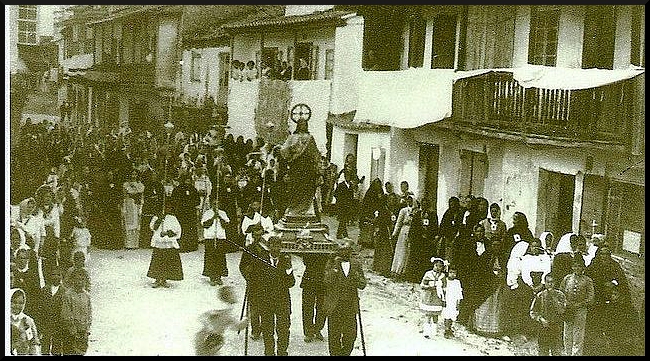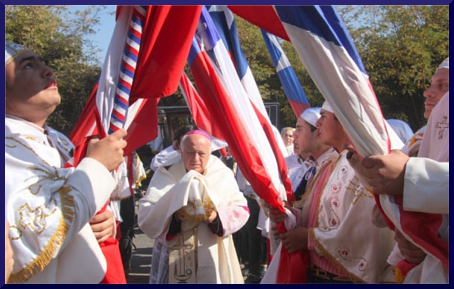“All things have their season, and in their times all things pass under heaven.” – Ecclesiastes 3:1
The Church in her season of Easter gives the faithful 50 days in which to rejoice and celebrate the resurrection of our Redeemer. These 50 days are a time of exultation, of victory, of fresh waters, lights – for “the Light of the world Himself, rose from the darkness of the tomb” – and alleluias! Gone are the penitential colors of violet; we no longer mourn over the humiliating and ignominious and sorrowful Passion of our Lord. It is the season for celebrating the triumphant victory of the Lord of lords and the King of kings!
Dom Gueranger writes:
“Of all the seasons of the liturgical year Eastertide is by far the richest in mystery. We might even say that Easter is the summit of the Mystery of the sacred Liturgy. The Christian who is happy enough to enter, with his whole mind and heart, into the knowledge and love of the Paschal Mystery, has reached the very centre of the supernatural life. Hence it is that the Church uses every effort in order to effect this: what she has hitherto done was all intended as a preparation for Easter. The holy longings of Advent, the sweet joys of Christmas, the severe truths of Septuagesima, the contrition and penance of Lent, the heartrending sight of the Passion-all were given us as preliminaries, as paths, to the sublime and glorious Pasch, which is now ours.
“The holy Fathers bid us look on these fifty days of Easter as the image of our eternal happiness. They are days devoted exclusively to joy; every sort of sadness is forbidden; and the Church cannot speak to her divine Spouse without joining to her words that glorious cry of heaven, the Alleluia…”
“[E]very sort of sadness is forbidden.”
Get that? Gueranger continues: “…what [Christ] wants from us now, is that we should keep near Him, in company with His blessed Mother, His disciples, and Magdalene, who are in ecstasies of delight at His triumph, and have forgotten the sad days of His Passion.” That is why this Catholic does not participate in the Divine Mercy devotions on the second Sunday after Easter.
The more than 2,000-year tradition of the Church would not have us recall “His most sorrowful Passion” on Quasimodo, or Low Sunday of Eastertide! Divine Mercy Sunday is a post VII novelty, and no one is obligated to take part, nor should he, for the very reason that Our Lord does not want us to re-live his sorrows at this time.
 In Chile, there is a most apt celebration for Quasimodo Sunday. The faithful there have a longstanding tradition, which some say was introduced by the Spanish conquistadores. The celebration is a joyful and triumphant one in which a statue of the living Christ is carried in procession. Often times, the statue is of the Sacred Heart.
In Chile, there is a most apt celebration for Quasimodo Sunday. The faithful there have a longstanding tradition, which some say was introduced by the Spanish conquistadores. The celebration is a joyful and triumphant one in which a statue of the living Christ is carried in procession. Often times, the statue is of the Sacred Heart.
Recalling that the Council of Trent decreed that every Catholic receive Holy Communion at Easter time, a priest carries Sacred Hosts in this procession while being protected and escorted by a cavalcade of horsemen. The priest carries the Eucharist to the sick and invalid who were not able to participate in the Easter liturgies, bringing them Communion so that they may meet their Easter obligation.
These processions are continuing examples of long-standing custom, of a holy and pious tradition which conforms to the triumphant joy of the season Holy Mother Church would have us enjoy. It is my hope that such devotions never give way to “Divine Mercy Sunday”, a devotion once condemned by Pope John XXIII, and prohibited by the Church until 1978, and which contrary to tradition, evokes the most Sorrowful Passion of our Lord at the most inappropriate time.
Obviously, Divine Mercy Sunday, only introduced about 16 years ago, is a recent novelty, and one which does not fit into the glorious season of Eastertide.





